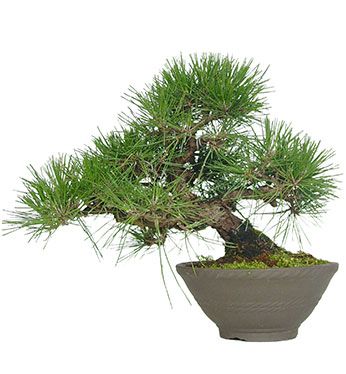Characteristics
Evergreen tree whose leaves are needles. The needles are grouped in pairs. They belong to the order of the conifers because its fruit, the pine, has the shape of a cone. It’s a tree which you can find on the coast and it has vigorous growth.
Location
Place outside and exposed to the sun. It’s one of the trees with most need of sunlight.
Watering
Pines need controlled watering. An excess of watering and with spoil with poor drainage can have fatal consequences for the life of the mycorrhizae. These are fungus whose roots act in a symbiosis with those of the pine and help it absorb mineral elements of the ground like phosphorus. Without this fungus the tree weakens and at then dies.
Fertilization
Spring and autumn. It’s preferable to use organic fertilizers which favour and preserve the mycorrhizae.
Re-potting
Every 3 years, at the moment of budding and before the opening of the needles within the buds. In our Mediterranean zone this is in the middle of March.
Substrate
100% Kiryuzuna, or mixed with a 50-70% of Akadama.
Pruning and pinching
Pruning
To be done in the coldest months of the year. Leave needles and leaf buds on the branches otherwise they will dry.
Pinching
As needles appear, pinch back overgrown shoots. In the growing season, remove long main shoots, trim one-third to half of this year’s new candles.. In late summer or early autumn, remove old needles and crowded twigs to let in light.
Wiring
From October to March. It’s recommended to use copper wire because pines are very flexible trees and the wire has to remain for a long time on the tree.
Curiosities
In Japan this pine is considered to be masculine. Its vigour, the texture of its bark, the dark colour of its needles and their rigidity give it this character.

